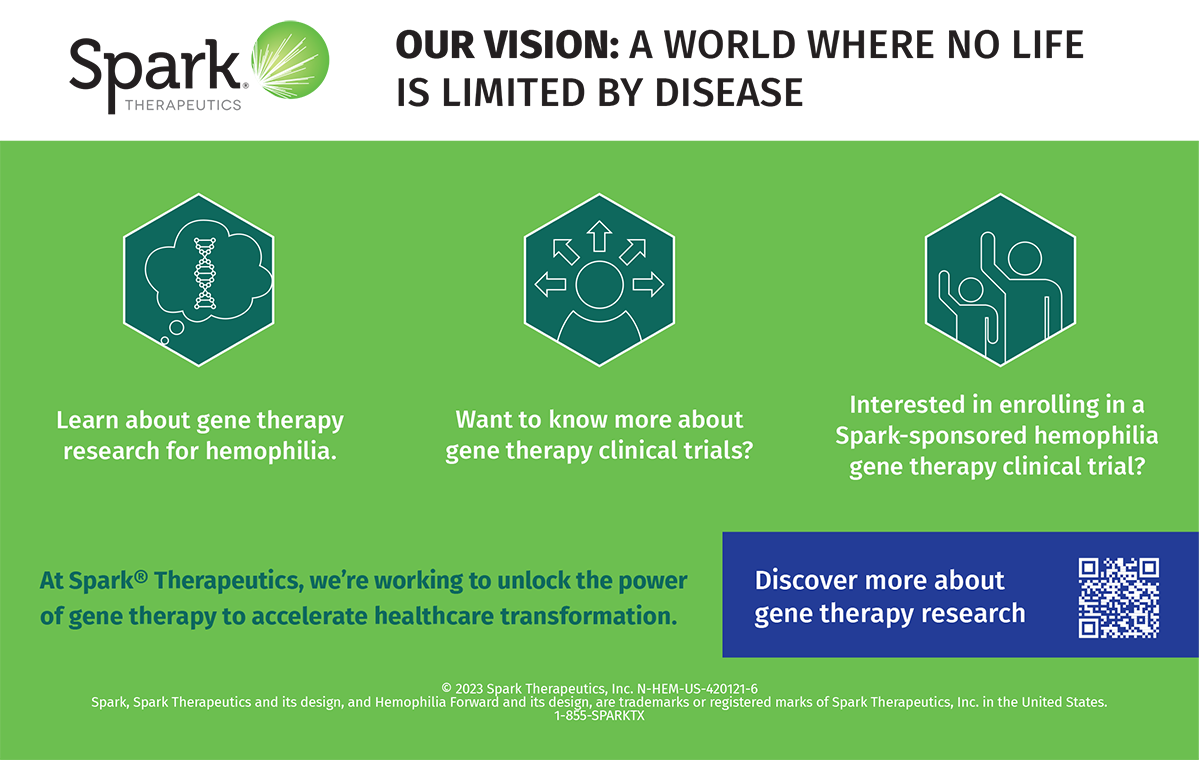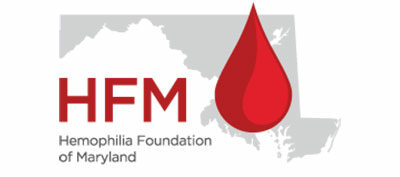About Bleeding Disorders

Want to Support HFM?
Want to join our efforts but not sure where to start? Make a donation, join our Foundation as a member or volunteer your time and take advantage of this incredible opportunity to lend your support. These are great ways to contribute to our causes, and every little bit goes towards supporting the mission of the Hemophilia Foundation of Maryland.
About Bleeding Disorders
What are Bleeding Disorders?
A bleeding disorder is a general term used to describe a wide range of medical problems leading to poor blood clotting and abnormal bleeding. When someone has a bleeding disorder, they tend to bleed longer. They do not bleed harder or faster than a person without a bleeding disorder. Small cuts or surface bruises are usually not a problem. More traumatic injuries can result in life-threatening bleeds and crippling deformities of the joints.
Blood vessels constrict – When an injury occurs, the blood vessel at the site of injury contracts to limit the flow of blood to the damaged area.
Platelet plug forms – Within seconds of the injury occurring, small cells found in the blood, called platelets, spread on top of the injured vessel and release chemical signals to attract other cells circulating in the blood. Some of the cells attracted are clotting factors. The first factor to be activated during the clotting cascade is the von Willebrand factor. The vWf is a glue-like protein that forms a plug that prevents blood from flowing to the site of injury.
Fibrin clot is created – Thirteen clotting factors (I-XIII) along with calcium, vitamin K and other proteins work together in a series of complex chemical reactions to form a fibrin clot. The fibrin clot acts as a net over the wound. Depending on the size of the injury, the fibrin clot strengthens over several days or weeks, and when the wound is healed, the fibrin clot dissolves.
If any of the steps in the clotting cascade don’t work properly or are deficient, the person bleeds longer and, therefore, has a bleeding disorder. The type and severity of the disorder is determined based on the protein that is missing from the blood and how much of it is missing.
Blood vessels constrict – When an injury occurs, the blood vessel at the site of injury contracts to limit the flow of blood to the damaged area.
Platelet plug forms – Within seconds of the injury occurring, small cells found in the blood, called platelets, spread on top of the injured vessel and release chemical signals to attract other cells circulating in the blood. Some of the cells attracted are clotting factors. The first factor to be activated during the clotting cascade is the von Willebrand factor. The vWf is a glue-like protein that forms a plug that prevents blood from flowing to the site of injury.
Fibrin clot is created – Thirteen clotting factors (I-XIII) along with calcium, vitamin K and other proteins work together in a series of complex chemical reactions to form a fibrin clot. The fibrin clot acts as a net over the wound. Depending on the size of the injury, the fibrin clot strengthens over several days or weeks, and when the wound is healed, the fibrin clot dissolves.
If any of the steps in the clotting cascade don’t work properly or are deficient, the person bleeds longer and, therefore, has a bleeding disorder. The type and severity of the disorder is determined based on the protein that is missing from the blood and how much of it is missing.
Hemophilia is an inherited bleeding disorder which causes the blood to not clot properly. Hemophilia is very rare. Currently, about 20,000 males in the United States have the disorder. Blood contains many proteins called clotting factors that help to stop bleeding. People with hemophilia have either a low level of these clotting factors or none at all.
von Willebrand Disease (vWD) is the most common bleeding disorder, found in approximately 1% of the U.S. population. vWD is a blood disorder in which the blood does not clot properly. Blood contains many proteins that help the body stop bleeding. One of these proteins is called von Willebrand factor (vWF). People with vWD either have a low level of vWF in their blood or the vWF protein doesn’t work the way it should.
In about 10 – 15% of people with hemophilia, the immune system produces an antibody (called an inhibitor) that destroys the clotting factor before it stops the bleeding. It is unclear as to why this happens. People with inhibitors experience much higher treatment costs than those who don’t develop this complication.
A person with hemophilia can bleed internally or outside the body. People with hemophilia do not bleed more than people without hemophilia, they just bleed longer. The most common types of bleeds are into the joints and muscles.
Other symptoms include, but are not limited to:
- Bleeding in the kidneys or bladder, leading to blood in the urine.
- Bleeding in the intestines or stomach, leading to blood in the stool.
- Bleeding in the large muscles of the body, leading to large bruises.
- Bleeding in the joints, leading to joint tightness, swelling, and pain.
- Bleeding in the brain, leading to headaches, neck pain, vomiting, changes in behavior and agility, double vision, or seizures. Brain bleeds are very serious and very dangerous.
External bleeding:
- Bleeding in the mouth from gum abrasion, cuts, bites, or losing a tooth.
- Unexplained nosebleeds.
- Heavy and excessive bleeding from small or minor breaks in the skin.
- Bleeding that starts and stops for a longer period of time than expected.
Video & Visual Educational Resources
- A Guide on When to Call your Child's Hematologist or Pediatrician - VISIT WEBSITE
- A Guide on When to Call your Child's Hematologist or Pediatrician - VISIT WEBSITE
- Hemophilia Special Needs Fact Sheet for Schools (from Nemours Children's Hospital) - VISIT WEBSITE
- Hemophilia in Pictures (from the World Federation of Hemophilia) - VISIT WEBSITE
- Visual Description of a Joint Bleed (from the World Federation of Hemophilia) - VISIT WEBSITE
Bleeding Disorder Resources Specific to School Settings
- Hemophilia Federation of America’s (HFA’s) Back to School Toolkit (includes customizable PowerPoint presentations, sample Individual Healthcare Plans, sample 504 plans, and more) - VISIT WEBSITE
- National Hemophilia Foundation’s Steps for Living Guidance for Schools - VISIT WEBSITE
- IDEA (IEP) vs. 504 Flowchart (Hemophilia Federation of America) - VISIT WEBSITE
- HFA’s List of Possible Accommodations for Students with a Bleeding Disorder - VISIT WEBSITE
- HANDI Highlights: Resources for Students Headed Off to College! - VISIT WEBSITE




